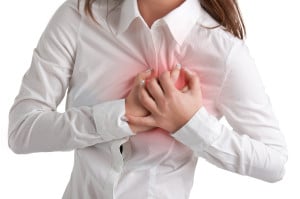Did you know about 610,000 people die of heart disease in the United States every year? It’s important to focus on your heart health throughout the year, but since February is Heart Month we wanted to share three things you should be doing to keep your heart in tip-top shape!

Know Your Risk Factors There are a bunch of different things that factor into your heart disease risk. Here are some of the most important ones:
- Age: Most people who die from coronary heart disease are 65 or older, but heart disease can happen at any age.
- Gender: Men and women are both at risk, but women tend to get coronary heart disease ten years later than men do! The risk for women goes up when they get closer to menopause and keeps going up as they get older.
- Family History: If your parent or sibling had heart disease, you’re at a higher risk to develop it yourself.
- Smoking: You’ve got to know by now that smoking isn’t good for you, but smokers are twice as likely to suffer heart attacks as non-smokers.
Go Healthy Your lifestyle might be the most important thing you can control when it comes to keeping your heart healthy. Exercising for at least 30 minutes a day, five days a week is a great start. Even if it’s just a walk around the neighborhood…you’re lapping the person sitting on the couch.

Another health tip? Eat foods that are low in salt, saturated and transfats and high in unsaturated fats, like fish and avocados. Studies also show eating fruit can lower your risk of heart disease. Know the Signs It’s super important that you don’t ignore the warning signs and symptoms of a heart attack.

If you or someone you know might be having a heart attack, you need to act fast. The chances of survival go way up when emergency treatment starts right away.
- Chest pain or discomfort: Most heart attacks start with discomfort in the center or left side of the chest that lasts for more than a few minutes, or that goes away and comes back. It can feel like uncomfortable pressure, squeezing, fullness or pain.
- Upper body discomfort: This might be in one or both of the arms, the back, neck, jaw or stomach.
- Shortness of breath: This can go hand in hand with that chest discomfort, but it can also happen before the chest discomfort starts.
- Other symptoms: This could include breaking out in a cold sweat, nausea or light-headedness.
A heart attack can feel like heartburn…is that burning sensation from eating a big cheeseburger or from an actual heart attack? It’s better to be safe than sorry. If you have persistent chest pain and you aren’t sure what’s causing it, call 911. Bottom line…if you think you or someone you know is having a heart attack, call 911 right away. Make sure you do your part to stay heart healthy, and wear red in February to support heart health awareness!



